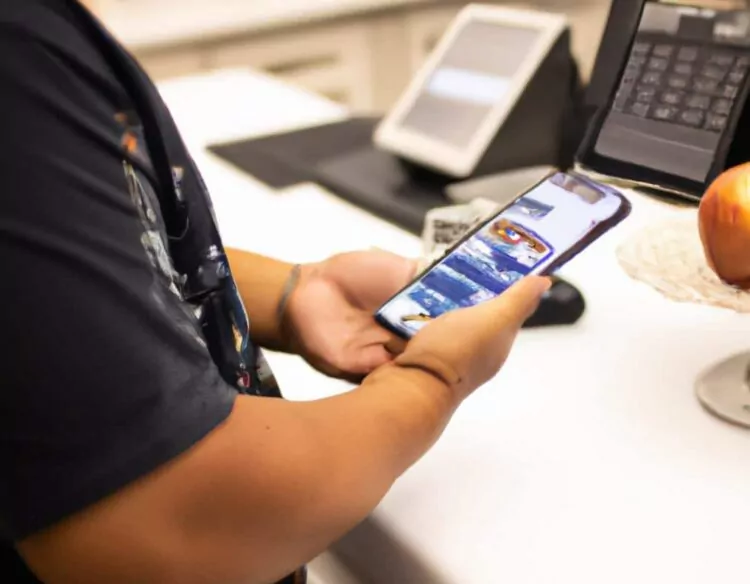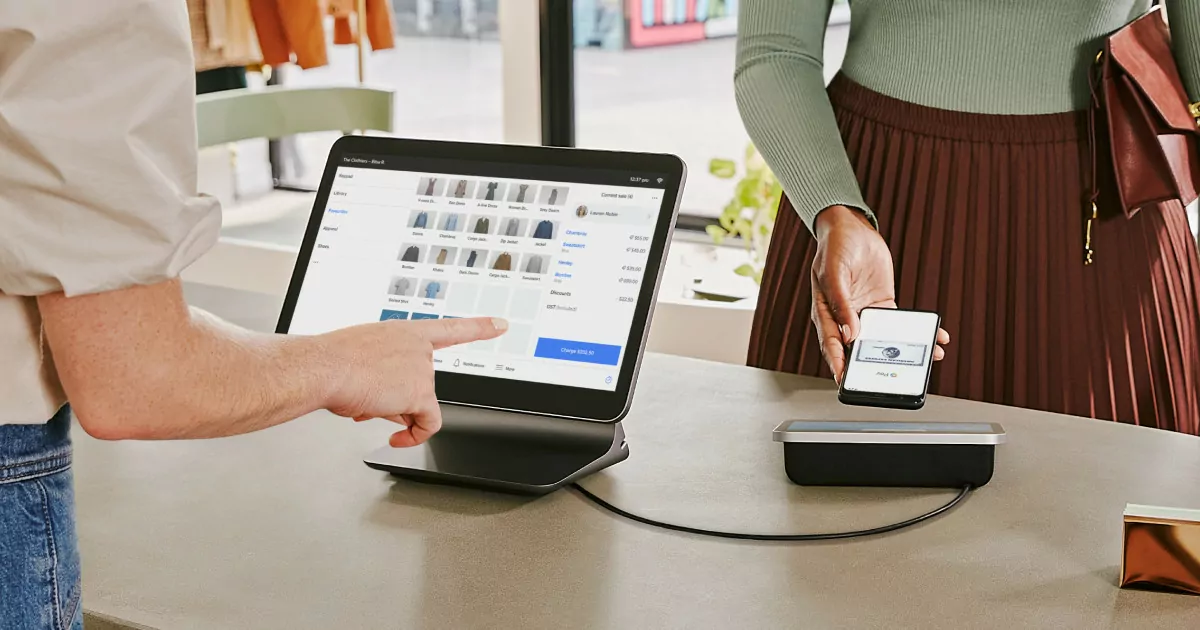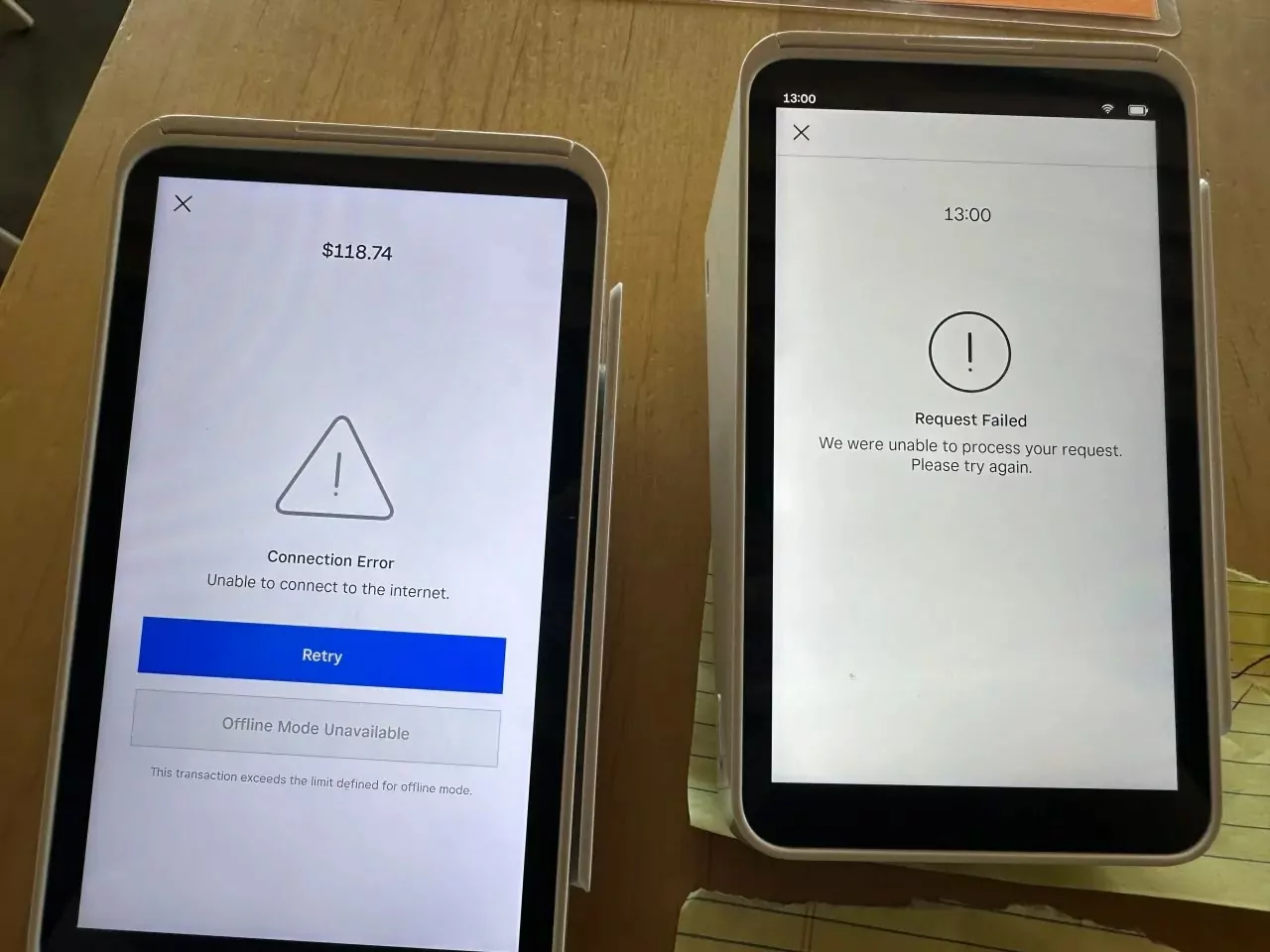Square Outages: The 411 on Why They Happen and What You Can Do. As a small business owner, you rely on your point-of-sale (POS) system to smoothly and efficiently handle transactions. However, when a square outage occurs, it can throw a wrench in your operations and leave you frustrated and stressed. While square outages are rare, they can happen at any time, causing disruptions for businesses across the nation. In this blog post, we’ll dive into the reasons behind square outages, and provide you with resources to stay updated on any current or potential square outage today.
Understanding the Role of Square POS in Business Operations
As a small business owner, you understand the importance of having a reliable and efficient point-of-sale (POS) system. Your business operations rely heavily on the smooth functioning of this system, and any disruptions can have a significant impact on your daily transactions.
Square POS, with its user-friendly interface and seamless integration with various devices, has become a popular choice among small business owners. Its robust features and accessibility make it a valuable tool in streamlining your sales processes, tracking inventory, and managing customer transactions. With Square POS, you have the power to accept payments, generate sales reports, and even manage employee schedules—all from the convenience of a single platform.
One of the key advantages of Square POS is its versatility. Whether you have a brick-and-mortar store, an online business, or a combination of both, Square POS offers a range of options to suit your needs. You can accept payments through your smartphone, tablet, or desktop, providing a seamless experience for both you and your customers.
In addition to its convenience, Square POS also offers valuable insights through its robust analytics and reporting capabilities. You can track sales trends, identify your best-selling products, and gain a deeper understanding of your customer preferences. Armed with this information, you can make informed decisions to optimize your inventory, pricing, and marketing strategies.
While Square POS is designed to be reliable and efficient, occasional outages can occur. These outages are typically rare but can happen due to various factors, such as technical glitches, maintenance, or even external factors beyond Square’s control. When an outage occurs, it is essential to stay informed and have a plan in place to minimize any disruptions to your business.
In the next section, we will delve into a specific Square outage that occurred on September 7, 2023, which had a global impact. Understanding the causes and effects of this outage will help shed light on how you can effectively manage such situations in the future.

Delving into the September 7, 2023 Square Outage: A Global Impact
On September 7, 2023, Square experienced a nationwide outage that had a significant impact on businesses across the globe. This outage, which lasted for several hours, left countless small business owners frustrated and scrambling to find alternative solutions for processing transactions.
The cause of the September 7th outage was initially attributed to a technical glitch within Square’s system. However, as the investigation unfolded, it was revealed that the outage was a result of a sophisticated cyberattack targeting Square’s servers. The attack not only affected the company’s POS system but also disrupted other critical services, such as online payments and payroll processing.
The consequences of the outage were far-reaching. Numerous businesses were unable to accept payments, leading to a loss in revenue and potential damage to their reputation. In addition, the inability to process transactions disrupted inventory management, customer service, and overall business operations.
Square immediately launched an investigation into the incident, working tirelessly to resolve the issue and mitigate any further damage. The company’s cybersecurity team worked alongside external experts to identify the vulnerabilities that were exploited and implement necessary security enhancements.
For affected businesses, the outage served as a wake-up call regarding the importance of having contingency plans in place. It highlighted the need to diversify payment processing options and explore offline payment alternatives when such situations arise.
The September 7th outage also underscored the significance of staying informed and updated during times of system disruptions. It is essential for business owners to proactively seek information from Square’s official channels, such as their website or social media platforms, to receive the latest updates on the outage and any potential resolutions or workarounds.
While the September 7th Square outage was an unfortunate event, it serves as a reminder that no system is entirely immune to technical glitches or cyberattacks. By understanding the causes and effects of this outage, small business owners can better prepare for similar situations in the future, ensuring minimal disruptions to their operations and protecting the financial well-being of their business.
Managing Square POS Outages: Practical Tips and Strategies
When a Square POS outage occurs, it’s important to have practical tips and strategies in place to minimize disruptions to your business. While you can’t completely prevent outages from happening, you can take proactive steps to mitigate their impact and ensure the smooth operation of your business. Here are some practical tips and strategies for managing Square POS outages:
1. Communication is key: During an outage, it’s crucial to communicate with your customers and keep them informed about the situation. Use social media platforms, email newsletters, and your website to update them on the issue and any alternative payment options available. Being transparent and proactive in your communication will help build trust with your customers and minimize frustration.
2. Have backup payment options: When Square POS is down, it’s essential to have backup payment options in place. Consider setting up alternative payment processors or exploring offline payment methods such as cash or checks. Having multiple options available ensures that you can still accept payments even if your primary system is experiencing issues.
3. Stay updated with Square’s official channels: To stay informed about outages and any potential resolutions or workarounds, regularly check Square’s official channels, such as their website or social media platforms. These channels will provide you with the most accurate and up-to-date information on the status of the outage and any steps you can take to minimize its impact on your business.
4. Implement a contingency plan: Develop a contingency plan that outlines the steps you will take in the event of a Square POS outage. This plan should include details on how you will process payments, manage inventory, and provide customer support during an outage. By having a clear plan in place, you can quickly and efficiently adapt to the situation and minimize disruptions to your business operations.
5. Learn from past outages: Reflect on past outages, such as the September 7, 2023, Square outage, and identify areas where your business was most affected. Use these insights to strengthen your contingency plan and implement additional measures to protect your business in the future. Consider investing in backup power solutions, such as generators or battery backups, to ensure uninterrupted operation of your POS system during power outages.
By following these practical tips and strategies, you can navigate Square POS outages more effectively and ensure the continued success of your business. Remember, being prepared and proactive is the key to minimizing disruptions and providing a seamless experience for your customers, even during challenging times.

Where to Find Updates on Square Outages
If you’re a small business owner who relies on Square POS for your day-to-day operations, it’s essential to stay informed about any outages that may occur. Being aware of the status of Square’s system can help you take the necessary steps to minimize disruptions to your business. But where can you find updates on Square outages?
Square provides official channels for users to receive the latest information on outages and any potential resolutions or workarounds. One of the best places to find updates is on Square’s official website, www.issquareup.com. The website typically contains a dedicated section or page that provides real-time updates on the status of their systems. Make it a habit to regularly check this page for the most accurate and up-to-date information on any ongoing outages.
In addition to their website, Square also utilizes social media platforms to communicate with their users during outages. Following Square on platforms such as Twitter, Facebook, or LinkedIn can be an effective way to receive updates in real-time. Square’s social media accounts often post announcements, alerts, and updates about any ongoing issues and provide instructions on how to navigate them.
Another valuable resource for updates on Square outages is Square’s customer support. If you’re experiencing issues with your Square POS system and need assistance or information about an outage, reach out to Square’s customer support team. They are equipped with the latest information and can provide you with specific guidance tailored to your situation.
It’s important to remember that during an outage, Square’s priority is to resolve the issue as quickly as possible. They work diligently to investigate the cause of the outage and implement necessary solutions. By staying connected through Square’s official channels, you can ensure that you receive the most reliable and timely information regarding the status of any ongoing outages.
Preparing Your Business for Future Square Outages
While Square outages may be rare, it’s always a good idea to be prepared for any unexpected disruptions to your business operations. By taking proactive steps to prepare for future Square POS outages, you can minimize the impact on your business and ensure a smooth experience for your customers. Here are some practical tips to help you get started:
1. Develop a comprehensive contingency plan: Having a contingency plan in place is crucial for effectively managing Square outages. Take the time to outline the steps you will take during an outage, including alternative payment processing options, inventory management strategies, and customer support protocols. By having a clear plan in place, you can quickly adapt to the situation and minimize any disruptions to your business operations.
2. Explore backup payment options: During a Square outage, having backup payment options is essential to continue accepting payments. Research alternative payment processors that you can easily switch to in case of an outage. At out tech shop we accept Venmo and Paypal as alternative options for credit card processing. Additionally, consider offering offline payment methods such as cash or checks as temporary alternatives. By diversifying your payment options, you can ensure that your business can continue to operate smoothly even during a Square outage.
3. Invest in backup power solutions: Power outages can often go hand-in-hand with system outages. To ensure uninterrupted operation of your Square POS system during power outages, consider investing in backup power solutions such as generators or battery backups. These will keep your system up and running, allowing you to process transactions even when the power is down.
4. Educate your employees: Make sure your employees are aware of the possibility of Square outages and are trained on the contingency plan. Provide them with the necessary resources and instructions to handle transactions manually or through alternative payment options. By keeping your employees informed and prepared, you can ensure a seamless customer experience even during system outages.
5. Regularly review and update your contingency plan: As your business evolves, so should your contingency plan. Regularly review and update your plan to reflect any changes in your operations, inventory, or customer support processes. This will help ensure that your plan remains effective and relevant in the face of any future Square outages.
By following these tips, you can better prepare your business for future Square outages. Remember, being proactive and having a well-thought-out contingency plan in place is key to minimizing disruptions and ensuring the continued success of your business, even during challenging times.

Using Offline Payments or Alternative Options When Square is Down
When a Square POS outage occurs, it’s crucial to have a backup plan in place to ensure that your business can continue to operate smoothly. While Square works to resolve the issue, you can rely on offline payments or alternative options to process transactions and minimize disruptions. Here are some strategies to consider:
1. Offline payment methods: In the event of a Square outage, one viable option for ensuring continued business operations is taking offline payments. Square POS offers a feature that allows you to process transactions even when your internet connection is down. This can be a lifesaver during unexpected outages or connectivity issues.
How It Works: By turning off the Wi-Fi or disconnecting from the internet on your device, Square POS switches to offline mode. In this mode, you can continue to accept card payments. These transactions are stored and then processed automatically once you’re back online.
Considerations: While this feature provides a convenient workaround during outages, it’s important to be aware of some considerations:
- Risk of Declined Transactions: Transactions processed offline will be authorized once your connection is restored. There’s a risk that some transactions might be declined if the customer’s card has insufficient funds or other issues at the time of processing.
- Security Concerns: Some business owners might feel apprehensive about storing payment information to be processed later. It’s crucial to ensure that your device is secure and to understand Square’s policies regarding offline transactions.
- Transaction Limits: Square may impose limits on the amount or number of transactions that can be processed offline. It’s important to check these limits to understand how they might impact your business during an outage.
Best Practices: To effectively use the offline payment feature:
- Inform Your Customers: Transparency is key. Let your customers know that their transactions will be processed once the system is back online.
- Monitor Transaction Limits: Keep an eye on the number and size of transactions you’re processing offline to stay within Square’s guidelines.
- Secure Your Device: Ensure that any device used for offline transactions is secure and accessible only to authorized personnel.
By understanding and utilizing Square’s offline payment feature, you can add an extra layer of resilience to your business operations, ensuring that you can continue to serve your customers even when connectivity issues arise.
2. Mobile payment apps: In addition to Square, there are several other mobile payment apps available that can serve as alternative options during an outage. These apps, such as PayPal, Venmo, or Google Pay, allow you to accept payments directly from customers’ mobile devices. Be sure to have these apps installed and set up on your smartphone or tablet beforehand, so you can seamlessly switch to them if needed.
3. Third-party payment processors: As we mentioned before, it good to explore other payment processors that can integrate with your existing systems and serve as a backup during a Square outage. Some popular options include Stripe, PayPal, or Venmo Payments. Set up accounts with these processors in advance and familiarize yourself with their functionality, so you can quickly transition to them when necessary.
4. Manual transaction processing: If you have a record-keeping system in place, consider using manual transaction processing as a temporary solution. Keep a logbook or spreadsheet to record customer information, purchase details, and payment methods. This will allow you to keep track of transactions and reconcile them once Square is back up and running.
5. Notify customers of alternative options: It’s essential to communicate with your customers during an outage and provide them with alternative payment options. Use social media, your website, and signage in your physical location to inform customers about the outage and the alternative methods you’re offering. Be transparent and responsive to customer inquiries to maintain trust and minimize frustration.
Remember, using offline payments or alternative options is a temporary solution until Square’s system is back online. Stay informed through Square’s official channels and be ready to switch back to your regular payment processing method once the outage is resolved. By being prepared and adaptable, you can minimize the impact of a Square outage on your business and continue serving your customers seamlessly.
Delving into the September 7, 2023 Square Outage: A Global Impact
On September 7, 2023, Square experienced a nationwide outage that had a significant impact on businesses across the globe. This outage, which lasted for several hours, left countless small business owners frustrated and scrambling to find alternative solutions for processing transactions.
Squares Response
In the initial hours of the outage, customers who tried to reach Square’s customer service were met with an unexpected hurdle.
Calls were directed to a voicemail recording that vaguely mentioned “unexpected closures” without providing any additional details. The message made it clear that customer service was not taking calls at that time, adding to the frustration and confusion of already beleaguered business owners.

By 7:00pm. EST. Square acknowledged the outage on social media platform X (formerly known as Twitter).
“We are currently experiencing issues with multiple Square services. We understand how important it is for your business that our services be up and running, and we are actively working toward a fix,” the company announced.
They also directed users to www.issquareup.com for updates. The latest update, timestamped at 18:32 PDT, thanked users for their patience and promised a resolution as soon as possible.
Ongoing Issues
Despite these assurances, the system remained down as of 10 p.m. EST, leaving businesses scrambling to find alternative payment methods.
Users vented their frustrations on social media, complaining about everything from lost business to error messages when trying to process credit cards. “Thanks, Square, we had to close early today,” one user lamented on platform X.
Community Solutions
Some users offered temporary fixes to help others navigate the outage. “Alright everyone, turn on offline payments and turn off your wifi or disconnect your Ethernet.
You’ll be able to run transactions and then authorize them later when the system is back up, ensuring you don’t lose business,” advised one savvy user.
The Bigger Picture
Given that Square services more than 2 million businesses, the scale of this outage is undoubtedly significant.
The disruption affects not just individual transactions but also appointments and other scheduled services, adding another layer of complexity to the problem.
As businesses nationwide await a resolution, this outage serves as a stark reminder of the vulnerabilities inherent in relying on centralized systems for essential business operations.
Square has yet to announce when they will fully restore services.
Small Businesses Feel the Impact
Tim Davis, who operates a small business in Middlebury, VT, recounted the escalating issues. “Square is down, we had to try customers cards multiple times to get it to process at first, then once that didn’t work we had to resort to cash or check only.”
The cause of the September 7th outage was initially attributed to a technical glitch within Square’s system. However, as the investigation unfolded, it was revealed that the outage was a result of a sophisticated cyberattack targeting Square’s servers. The attack not only affected the company’s POS system but also disrupted other critical services, such as online payments and payroll processing.
The consequences of the outage were far-reaching. Numerous businesses were unable to accept payments, leading to a loss in revenue and potential damage to their reputation. In addition, the inability to process transactions disrupted inventory management, customer service, and overall business operations.
Square immediately launched an investigation into the incident, working tirelessly to resolve the issue and mitigate any further damage. The company’s cybersecurity team worked alongside external experts to identify the vulnerabilities that were exploited and implement necessary security enhancements.
For affected businesses, the outage served as a wake-up call regarding the importance of having contingency plans in place. It highlighted the need to diversify payment processing options and explore offline payment alternatives when such situations arise.
The September 7th outage also underscored the significance of staying informed and updated during times of system disruptions. It is essential for business owners to proactively seek information from Square’s official channels, such as their website or social media platforms, to receive the latest updates on the outage and any potential resolutions or workarounds.
While the September 7th Square outage was an unfortunate event, it serves as a reminder that no system is entirely immune to technical glitches or cyberattacks. By understanding the causes and effects of this outage, small business owners can better prepare for similar situations in the future, ensuring minimal disruptions to their operations and protecting the financial well-being of their business.
Final thoughts
In today’s fast-paced business world, it’s crucial to have a reliable point-of-sale (POS) system to keep your operations running smoothly. Square POS has become a popular choice among small business owners due to its user-friendly interface and robust features. However, like any technology, Square is not immune to occasional outages. While these outages are rare, they can have a significant impact on your business and cause frustration and stress.
The September 7, 2023, Square outage serves as a reminder that even the most dependable systems can experience technical glitches or fall victim to cyberattacks. The outage had a global impact, leaving businesses scrambling to find alternative solutions for processing transactions. This event highlighted the importance of having a contingency plan in place and exploring backup payment options. By diversifying your payment processing methods and staying informed about outages through Square’s official channels, you can minimize disruptions and ensure a seamless experience for your customers.
When a Square outage occurs, communication is key. Keep your customers informed about the situation through social media, email newsletters, and your website. Being transparent and proactive in your communication builds trust and minimizes frustration. Additionally, having backup payment options, such as offline methods or alternative payment processors, ensures that you can continue accepting payments even when Square is down.
Preparing your business for future Square outages is essential. Develop a comprehensive contingency plan that outlines the steps you will take during an outage and regularly review and update it as your business evolves. Consider investing in backup power solutions to keep your POS system running during power outages, and educate your employees on the contingency plan to ensure a seamless customer experience.
Remember, Square outages are rare, but being prepared and proactive is key to navigating them effectively. By following the practical tips and strategies outlined in this blog post and staying connected through Square’s official channels, you can minimize disruptions and protect the financial well-being of your business. Don’t let outages throw a wrench in your operations—be prepared, be informed, and keep your business running smoothly.


